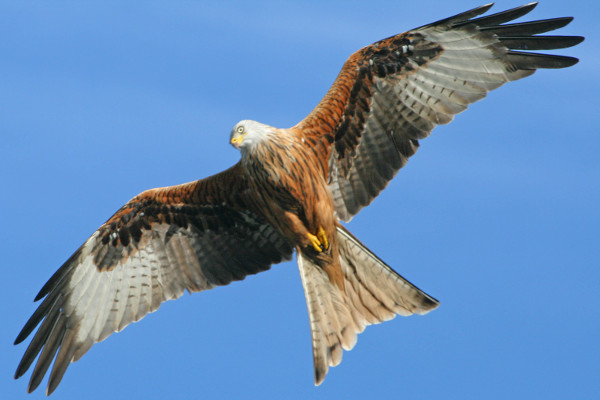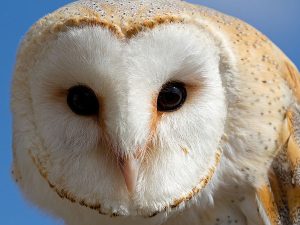Already there are birds around the garden preparing for nesting. Blue Tits in particular have been checking out a couple of nest boxes that I can see from the house, one of which is right outside a bedroom window.
This is one of our most popular boxes in spite of being very close to people moving around, and a couple of mornings ago I watched a Blue Tit popping in and out and then performing what I assumed was a little display flight to the nearby hedge, almost gliding, but slowly with quick, shallow wing beats. I had never seen this behaviour before and decided to turn to the British Trust for Ornithology – fountain of all bird knowledge in the UK – and straight away found information about the behaviour I had seen – namely, ‘if you see a Blue Tit flying a few metres between perches, with fast wing-beats, or an occasional glide, it is likely to be the display flight of a male attempting to gain the attraction of a nearby female.’ In my case it was from the nest box entrance to the adjoining hedge and not only made complete sense, but also brightened my day – there is nothing better on a cold February morning than to think ahead to all the entertainment outside my windows over the next few months. But although the smaller birds are clearly thinking about breeding soon they are not the most obvious species displaying. Larger birds around us here, especially rooks, kites, buzzards and tawny owls have all shown signs of the breeding season being almost upon us. The local Tawnies are very vocal at dusk at the moment, Red Kites have been chasing each other languidly over the garden, dipping and gliding and Buzzards too have been displaying – swooping and diving in the windy February weather. The local rooks however, of which we have plenty, are already sitting around their rookeries. Some are flying in with twigs, making a few repairs to last year’s nest while others are simply sitting in or near their nest, clearly claiming ownership. For our birds, spring is just around the corner.

Photographing plants and small invertebrates is something I spend a fair bit of time doing all year round and it is always a pleasure to see a glimpse of sunshine at this time of year, grab my camera and get out into the garden for twenty minutes or so to see what’s around or coming into flower. I’m hoping for frogs in the Marshy Pond soon – always brilliant subjects for a photograph – or perhaps an early queen bumblebee looking for the first crocus flowers. Mostly though in the winter and early spring I photograph birds, largely because this is something I am able to do without stepping out into the cold and many of my bird photographs are taken through closed windows. My office desk is in front of two large glass doors and outside is a bird feeding station which is always constantly in use. This does limit the type of pictures I take of course – but for general use on websites these are of a good enough quality as long as the glass is relatively clean. The fact that I have bird feeders right outside all day means that I can not only stop work and take the occasional photo when something interesting pops up, but also that I am able to watch the behaviour of the various species – something that I find absolutely fascinating. Recently for instance I have noticed blackbirds standing beside the few mole hills we have in the garden, waiting patiently for the mole beneath to push up more soil which the blackbird then immediately pounces upon to find any useful food – an earthworm or grub of some kind. This is very smart learned behaviour and several of our blackbirds of both sexes have now adopted this rather clever, but lazy, behaviour! Mostly though photographing birds like this Long-tailed Tit in this way gives me an opportunity to see a variety of species sitting around, waiting for a space on the feeders which can produce photos with movement and life. Using your house as your hide is a great idea if you are not the type of person who likes to tramp around outside in cold wet winter weather!

I first visited the piece of land in Oxfordshire where I was to create the Wildlife Gardening Centre in 1990, a plant nursery and information centre for wildlife gardeners. The idea of wildlife gardening that long ago was still quite a novel one but I had been interested in wildlife in gardens since I was a small child. My mother’s small terraced garden in the centre of Oxford was full of life, partly because she gardened organically and partly because most of my family were mad about frogs and fish and newts and the small pond in our garden was full of creepy crawlies brought home by my brothers. They found grass snakes and injured birds so we always had extra ‘guests’ in the house or garden. My own interests focused on birds and smaller creepy crawlies especially caterpillars which I reared to pupation and beyond, but I also had a fresh water aquarium full of dragonfly larvae and sticklebacks. The Oxfordshire countryside, its wildlife and flowers were a major part of my young life and I spent a great deal of time on local river banks as well as wildlife watching in the garden. Once I had a garden of my own (and a degree in Plant Ecology) it was inevitable that I would want it to be a haven for wildlife but I realised that the only way I could get the native or wildlife friendly plants I wanted was to grow them myself. Much of the research I had been involved in revolved around growing plants so I was competent in that regard, but what about other people who might want these plants for their gardens? I decided to give up my research, leave my job and set up a plant nursery and demonstration wildlife garden where other people could get the plants and information they needed to create their own garden to encourage wildlife. The enterprise was a great success, with its story appearing in many magazines and newspapers, on several television programmes including Gardener’s World and even the BBC News. A huge amount of hard work went into setting up the Wildlife Gardening Centre and it led directly on to what I do now – writing about wildlife gardening and showing others how it can be done.

The feeling of spring in the air was almost tangible and I practically tingled with anticipation as I sloshed around the garden in my wellington boots with my camera in hand. Dunnock, chaffinch great tit, robin and linnet were all singing and a couple of frogs were splashing around in the Marshy Pond which last year was overwhelmed by croaking males by early March. Buzzards were displaying in the bright sky overhead and the garden suddenly seemed to be bursting with life. In spite of all this activity around me the most exciting thing that caught my eye was a single splash of bright yellow in the grass. It was a solitary Dandelion flower, glowing in the sunlight, just waiting for an early small tortoiseshell butterfly out of hibernation or a passing queen bumblebee. Sadly no bees were around but the sun’s sudden warmth will surely awaken them from their hibernation in the next couple of days. Spring really has arrived in the form of a humble weed, one of the most important wildlife plants around this month.

I’m sure many people would consider that there are quite a few disadvantages to moving from a friendly, busy village in Oxfordshire to the middle of the South Shropshire countryside with no ‘amenities’ within walking distance. Our roads are very narrow and sometimes in rather bad repair and we frequently get snowed in when the winter weather arrives. In heavy rain our tiny road turns into a small river and large areas of the garden, especially the vegetable garden, become rather pond-like! But however primitive conditions around us might seem to some of our friends, I wouldn’t swap my present location for a cosy town house anywhere. Not only are our views incomparable but the wildlife here brings constant joy and daily surprises. The local birds are a great interest of mine and we often have very large flocks of finches around us rather than a few here and there. Currently there is a wonderful flock of Linnets here (the actual collective noun for a lot of linnets is a ‘parcel’) topping well over 200 individuals. They are feeding in the field next to my house which is managed organically and in the old-fashioned way of autumn harvesting, winter standing stubble and then ploughing and sowing in the spring. This field is constantly alive with birds and the linnets are happily settling in a large ash tree in my garden to preen and twitter before they head down to the ground to feed. They are often joined by large flocks of wood pigeons and sometimes stock doves, a constant but welcome distraction from my work. It’s impossible to ignore them and I make frequent forays into the garden with binoculars to see what they are up to. My husband likes to joke that one day I could be found lying in the garden having been pecked unconscious by birds or nibbled by foxes. Maybe a bit unlikely but you never know with so much wildlife around us at this time of year!

The weather is a bit hit and miss at this time of year – sometimes mild and bright and sunny and the next moment there are flurries of snow and a bitter wind which sends me scurrying inside. However, in spite of the temperature there are still signs of the spring that will inevitably come, as snowdrops, hellebores and even a few daffodils are bursting into flower. Several bird species are now singing including the local coal tits, sweet little birds that I love to see around the garden. Where they nest locally is anybody’s guess but we do have lots of small woodlands round about that are overgrown and not managed in any particular or organised way so I assume that coal tits and also the local Marsh Tits are able to find nesting holes in the many old trees round about us. The large local elders in particular develop hollow stems and branches where the soft heart wood has decayed and these old trees are simply left to their own devices – no tidying up is carried out. Both coal and marsh tits are amongst my absolute favourite small birds and we are very lucky to have plenty of them round about. At some time in the late spring we see small family parties, especially of the marsh tits, so I know that they must breed somewhere very nearby. The parents bring the youngsters to the garden where I assume the large numbers of invertebrates here provide plenty of food and the young sit around on the fences and in the fruit trees waiting to be fed. In their soft palette of buff, grey and black they are truly elegant little birds and although it is a pleasure to see them all year round I’m always happy to see them this month, using the feeders, often taking sunflower hearts away to cache for later. Nest boxes have now been provided for this special species which, along with the willow tit, is in serious decline.
Thanks to Jenny Steel of Wildlife Gardening for info.


